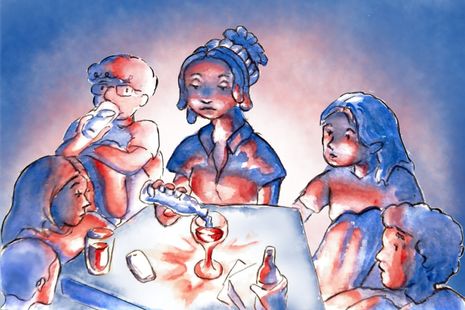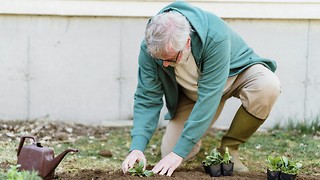Revolutionise your pres: here’s how to turn water into wine
Beatrix Biagini uncovers the formula that will help you do freshers’ week on a budget

Fed up with ring of fire? Always moaning that the Pinot Noir at the Regal is a whole pound more expensive than in your home town? Well perhaps a group of international physicists have the answer.
This August, Chemistry World reported that a team led by Gerard McCaul and Matthias Runge have turned water into wine. As a Jesuan and a NatSci, the idea immediately intrigued me – could the biblical miracle performed by the namesake of my college have a scientific explanation?
In the captivatingly-titled paper ‘Tuning the terahertz response of liquids by creating polar many-body excitations’, published in July this year, the group outline how they finally put their theories into practice.
They described how they applied different ‘pump fields’ to both water and alcohol to render the ‘polaron absorbance frequency’ in the ‘terahertz region’ the same, and hence achieve optical mimicry.
“Could the biblical miracle performed by the namesake of my college have a scientific explanation?”
Despite both water and alcohol having fundamentally different structure and bonding, their optical properties can be manipulated so that they appear identical. The most obvious optical property is colour, which is determined by the absorption and reflection of specific wavelengths of light. For instance, red objects reflect wavelengths corresponding to red, and absorb every other visible wavelength. These optical properties continue across the electromagnetic spectrum, outside our visible range. In the terahertz region of the spectrum, where the energy provided is 8000 times smaller than visible light, the wavelengths absorbed are determined by the liquid’s polaron frequency.
Despite sounding like something out of Star Wars, a polaron is, disappointingly, far less exciting. It is simply just an electron and the distortion it causes around it – picture a ball rolling around on a trampoline, causing a dent to follow it.
The polaron frequency is dependent on the electron concentration within the liquid, which can be controlled by using an aforementioned ‘pump field’. A pump field is a laser pulse with enough energy to ‘knock’ electrons out of neutral solvent molecules, and thereby increasing the electron concentration. This allows the resonant frequency of polarons for both water and alcohol to be adjusted and made equal.
“For a few picoseconds, water and wine can be made optically identical”
For a few picoseconds, and in the electromagnetic region of terahertz, water and wine (well… not quite wine, but a very similar isopropyl alcohol) can be made optically identical.
So, unless you have a laser to hand and can finish your drink (which will unfortunately still taste of water) in record time, maybe don’t invite yourself to a wedding banquet in Cana with high hopes anytime soon.
Having had my hopes dashed by the physicists performing the transmutation of water into wine, I turned my attention to a solution offered by chemists – don’t worry, resorting to a sneaky drop of red food colouring isn’t your only option.
The Royal Society of Chemistry suggests putting turmeric and washing soda in warm water to create a red ‘wine’ colour. Turmeric contains the compound curcumin which acts as a natural pH indicator, and supposedly provides anti-inflammatory benefits. In basic conditions (as facilitated by our washing soda) it is red, and in acidic conditions (which can be provided by vinegar) it is yellow. So, by adding vinegar, or alternatively washing soda, you can transform your drink from wine to water and water to wine as many times as you please. Admittedly, the ‘water’ will be an enticingly pale yellow colour, and I’d personally advise against tasting it.
All in all, if this is the best that science can offer, it doesn’t seem that Chilford Hall Vineyard has anything to worry about.
 News / Cambridge students accused of ‘gleeful’ racist hate crime4 December 2025
News / Cambridge students accused of ‘gleeful’ racist hate crime4 December 2025 News / Churchill announces June Event in place of May Ball3 December 2025
News / Churchill announces June Event in place of May Ball3 December 2025 News / Cambridge cosies up to Reform UK30 November 2025
News / Cambridge cosies up to Reform UK30 November 2025 News / University Centre hangs in the balance28 November 2025
News / University Centre hangs in the balance28 November 2025 News / Write for Varsity this Lent3 December 2025
News / Write for Varsity this Lent3 December 2025










